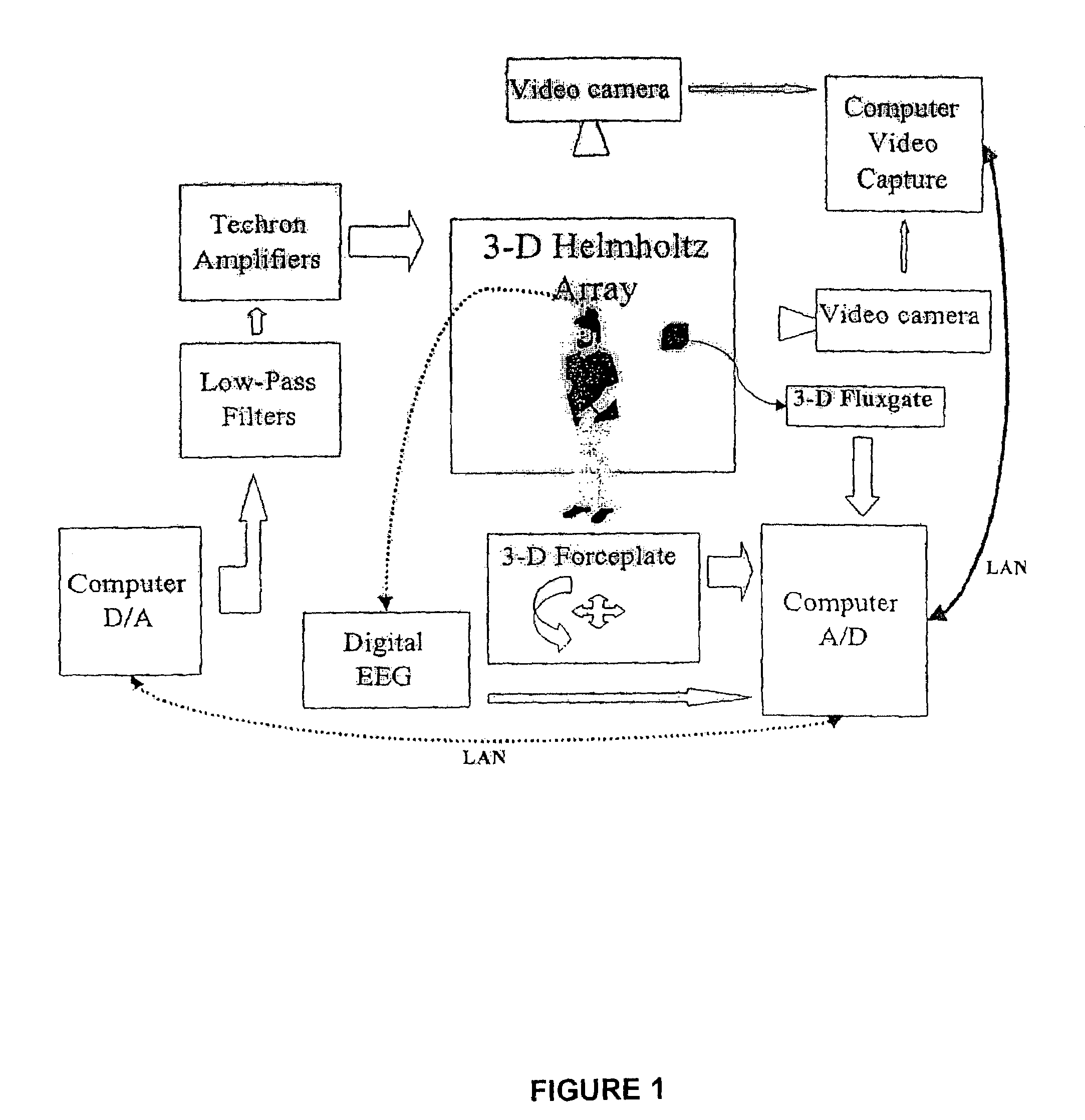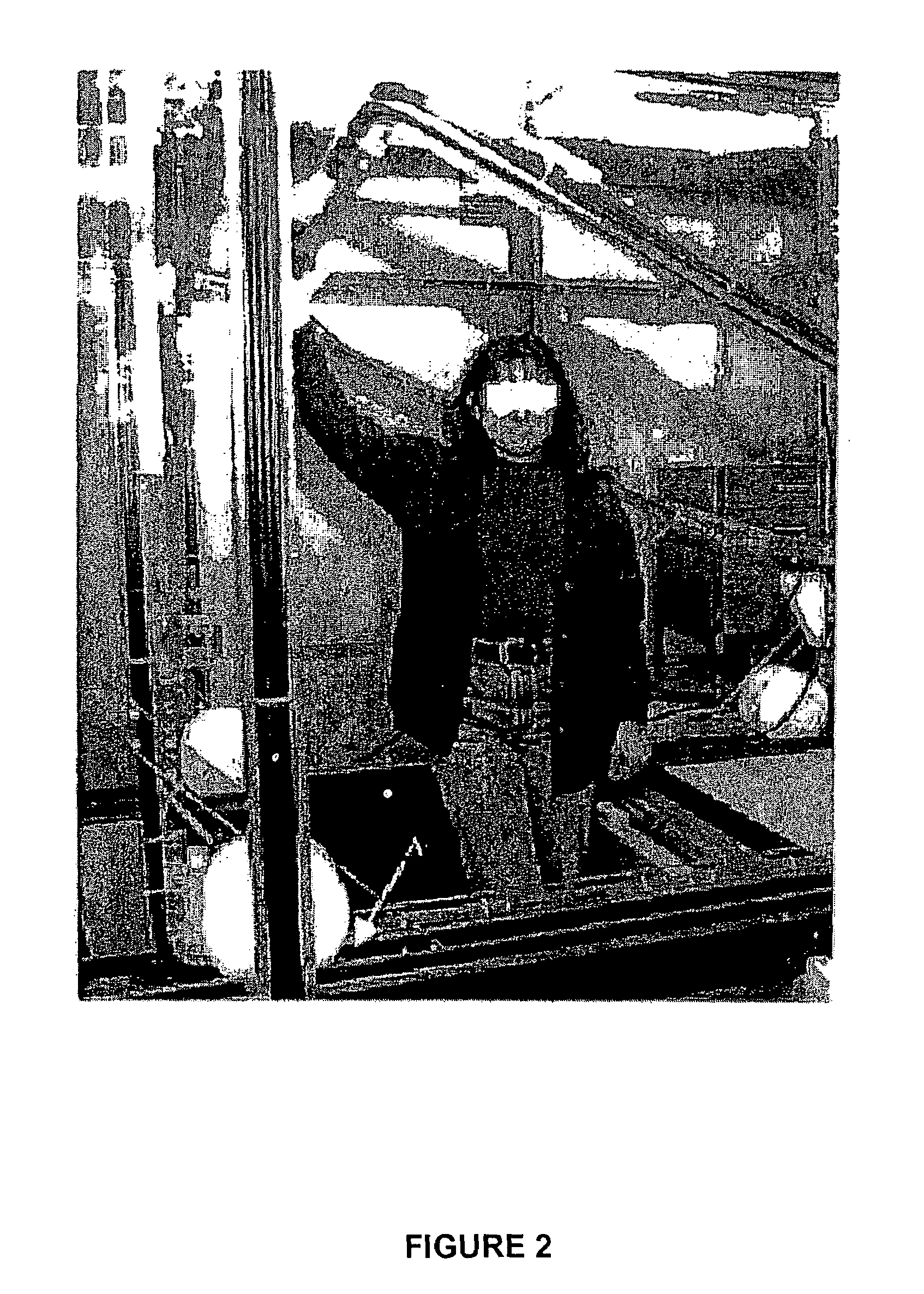Diagnosis and classification of disease and disability using low frequency magnetic field designed pulses (Cnps)
a low frequency magnetic field and classification technology, applied in the field of magnetic fields, can solve the problems of not being able to identify patients according to disease categories based on pulsed magnetic field exposure, and neither the literature in general, has contemplated or actually demonstrated the possibility of pulsed magnetic field use in diagnosis and classification of diseases
- Summary
- Abstract
- Description
- Claims
- Application Information
AI Technical Summary
Benefits of technology
Problems solved by technology
Method used
Image
Examples
example 1
[0106]Diagnostic Discrimination of Rheumatoid Arthritis (RA) Patients from Fibromyalgia (FM) Patients and Both from Healthy Controls Based on Differential Effects of Pulsed Magnetic Fields (Cups; 200 μT) on Normal Standing.
[0107]Specific time varying pulsed magnetic fields (Cnps) have been shown to alter subjectively assessed animal and human behaviours, including pain perception. The differential response to specific pulsed magnetic fields was used on standing balance and other behavioural measures to separate normal control patients from patients with different diseases or pathologies.
[0108]Patients were recruited, 15 RA (mean ±SD 58±12.4; 5 male, 10 female) and 15 RA (mean ±SD 45±10.2; 15 female) from a university hospital outpatient rheumatology clinic. All patients met the most recent American College of Rheumatology (ACR) disease classification criteria Also recruited were 15 healthy controls (mean ±SD 31±7.4; 7 male, 8 female) from among university students and personnel. Eac...
example 2
Assessment of Pain and Analgesia in Subjects Exposed to a Magnetic Field
[0111]Ratios of electrical current (mA time point / mA baseline) were applied to the web of the left thumb required to produce a subjective “moderate” pain rating in male and female university students (N=11) while exposed to either a sham or pulsed magnetic field (FIG. 11). A ratio greater than 1 may be interpreted as an indication of analgesia (or hypoalgesia), and less than 1, hyperalgesia. Individual subjects were randomly assigned to either an analgesia-inducing magnetic field (MN) exposure (N=6) or postural sway altering MF group (N=6). Sham and MF exposure trials were held at least one week apart and both experimenter and subjects were kept blind to the exposure conditions until the completion of the study (double-blinded). Electric current recordings at each time point (15-60 min) were divided by the baseline reading taken at time point 0 (not shown). Time point 15 was a second control time point, with exp...
PUM
 Login to View More
Login to View More Abstract
Description
Claims
Application Information
 Login to View More
Login to View More - R&D
- Intellectual Property
- Life Sciences
- Materials
- Tech Scout
- Unparalleled Data Quality
- Higher Quality Content
- 60% Fewer Hallucinations
Browse by: Latest US Patents, China's latest patents, Technical Efficacy Thesaurus, Application Domain, Technology Topic, Popular Technical Reports.
© 2025 PatSnap. All rights reserved.Legal|Privacy policy|Modern Slavery Act Transparency Statement|Sitemap|About US| Contact US: help@patsnap.com



